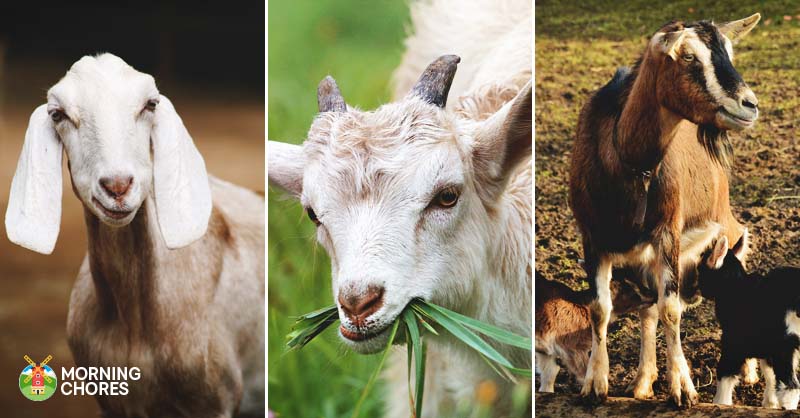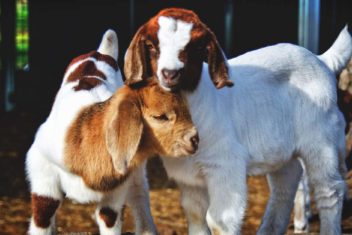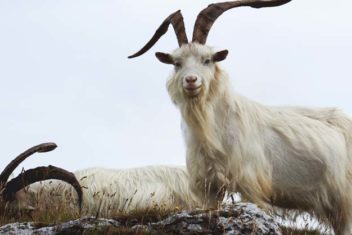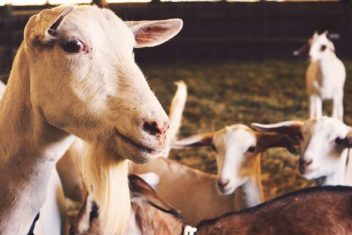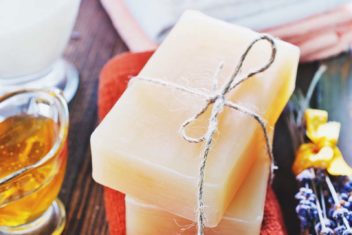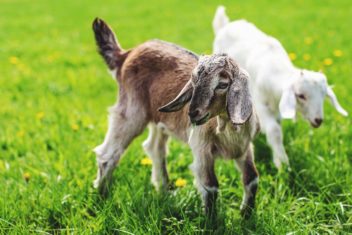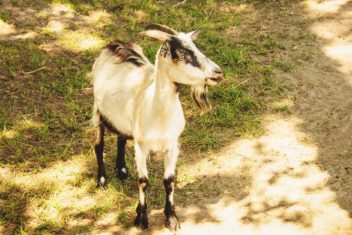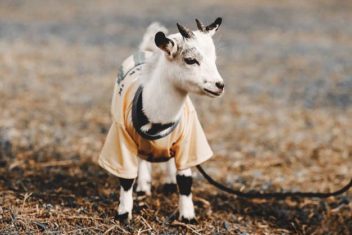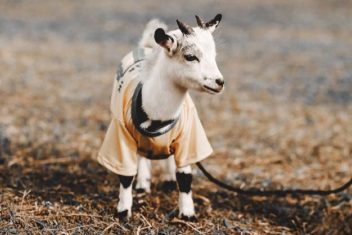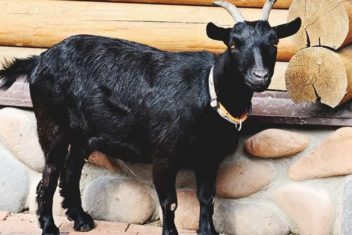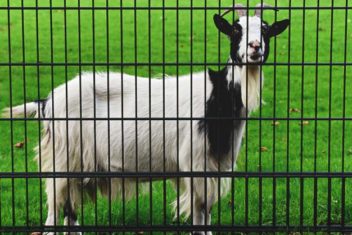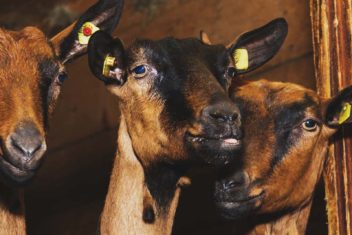“Stubborn old goat!” Have you ever heard that phrase? In my experience, goats can be pretty stubborn, but some breeds can also be really useful too.
You may remember, we gave you an article a few years back on some of the best milk and meat breeds of goats. I wanted to bring you an updated and detailed list of some of the best and most interesting goat breeds and their uses.
Hopefully, this will give you great insight as to what goats are and can be used for. Then maybe you’ll feel the need to add a “stubborn old goat” or two to your homestead.
Here is the list of goat breeds that you should know about:
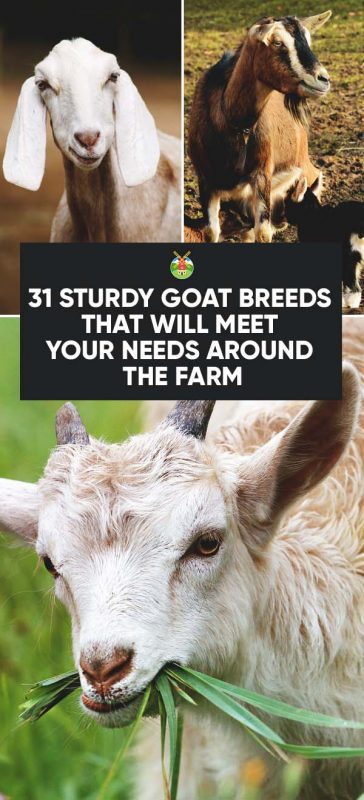
1. Nubian
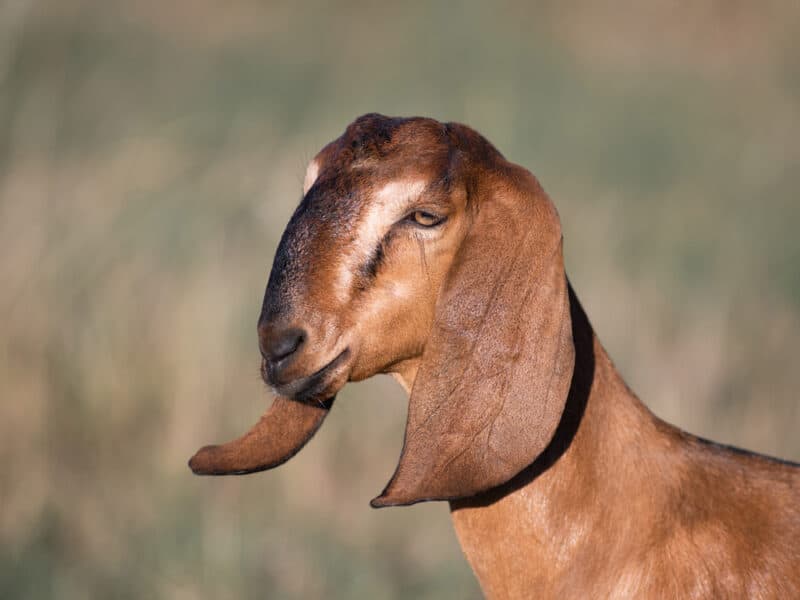
These goats are incredibly popular because of their high-butterfat milk. Nubian milk is one of the easiest goat milks to strain for butter. It’s creamy and rich, with an average butterfat content that exceeds every other breed but the Nigerian Dwarf.
Nubian milk is more palatable if you’re unused to goat milk. It has a mild, creamy flavor.
They can grow very large, weighing up to 250 lbs. As a dual-purpose goat, Nubians are ideal. They produce plenty of meat and up to about a gallon of milk per day.
But, Nubians are loud. In fact, they’re one of the loudest goats around. They bellow when they want food. Or just when they’re bored. If you’re not up for loud, demanding goats, Nubians might not be the goat for you.
If you like the idea of having a goat for milk, then you’ll want to consider this breed. Not to mention, there are so many things you can do with goat’s milk.
2. Saanen
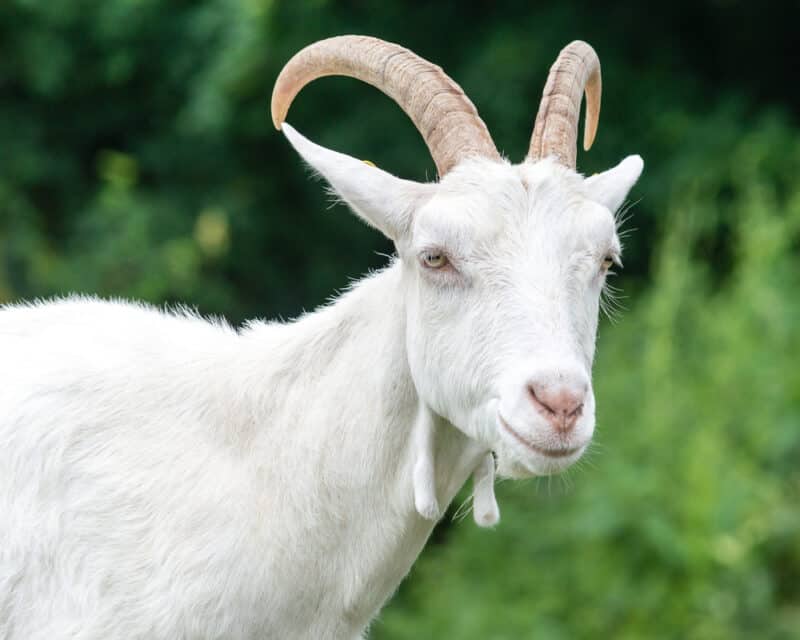
Sanaans are beautiful goats. These graceful, white ungulates are some of the easiest to handle. They have sweet, calm personalities; and are healthy, cold-hardy animals. A good Sanaan goat can produce up to 3 gallons of milk each day, making it the highest-producing dairy goat breed.
Sanaan milk is plentiful, but it does have the lowest butterfat content. It’s also one of the goatiest milks in flavor. If you’re on the fence about goat milk, Sanaan milk can be difficult to swallow.
Sanaans are also less heat tolerant than many other breeds. They love cool weather and never really bulk up like meat and dual-purpose goats do. Sanaans do tend to top out at about 160 lbs, spread over a lean, graceful build.
So if you’re looking for the ideal meat and milk breed, Sanaans might not be your best bet.
3. Alpine
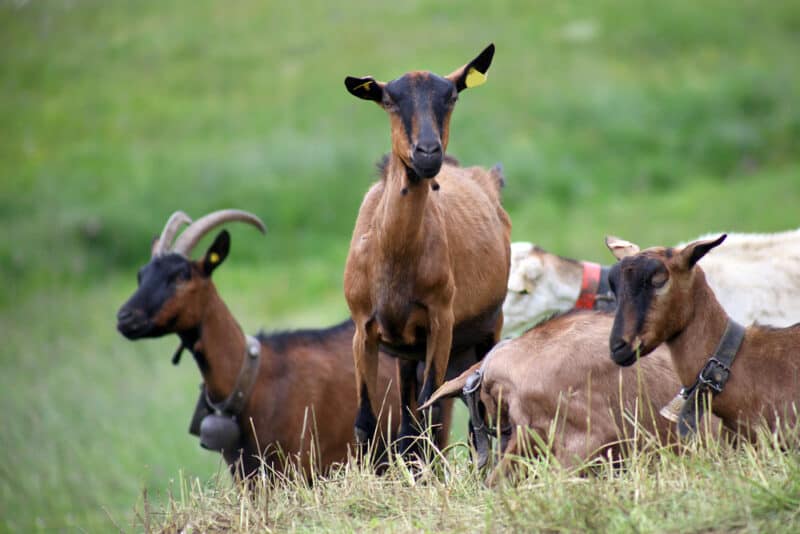
The Alpine goats originated in the Alps, hence their name.
Alpine goats are playful, friendly, and curious. They’re exceptionally hardy, large, beautiful goats who look so perfectly goaty. Alpines fit into family homesteads with ease. They’re fun for kids to handle and are hardy enough to thrive primarily on forage.
Adult alpines weigh in at a minimum of 160 pounds, often topping out over 250 pounds. They produce about a gallon to a gallon and a half of milk per day. These goats are a great dual-purpose breed.
They’re quiet too. An alpine’s “maaa” is softer than many other breeds, so even when they’re complaining, it’s not too loud.
For a dual-purpose homestead, alpines are really the ideal goat. The only downside is that alpine milk does have a distinctly goaty flavor. I love it, but if you’re not a fan of goat’s milk, it may be a struggle to appreciate the bounty your alpine brings to the family.
4. Oberhasli

This breed of goat originated in Switzerland. It is now one of the top breeds of dairy goats in the United States.
These pretty brown and black dairy goats are slender and graceful, friendly creatures with sweet personalities. They average only about 120-150 lbs and produce about a gallon and a half of moderate butterfat milk each day.
Oberhasli goats are cold weather-hardy, but occasionally struggle to thrive in extreme heat. Like Sanaans, they don’t grow meaty enough to be good as dual-purpose goats, but their milk is easy to transition to, even for people unused to goats milk.
Oberhaslis tend to break out of paddocks less than some other breeds (like Nubians or alpines), and their sweet, docile temperament makes them less eager to destroy your fencing.
5. American Lamancha
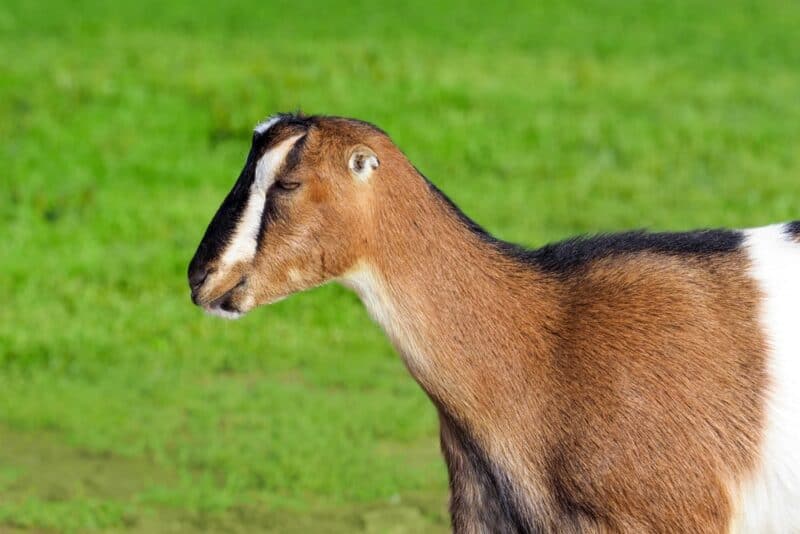
When you see an American Lamancha you’ll know it. They have ears that are often referred to as “gopher ears.” Obviously, they stand out when compared to other goat breeds.
These goats have a distinctive look – with their earless-looking heads, they’re not everyone’s favorite goat. But they’re sweet-tempered animals that produce delicious, sweet, high-butterfat milk. Their milk usually comes in under Nubians for butterfat content (4%).
Lamanchas are also great meat goats. They’re not an extra large breed, topping out at about 130-160 pounds, but they are compact and gain weight well.
But Lamancha’s biggest advantage is that they consistently produce milk for up to 2 years without having to be bred again. They also continue to produce well in challenging conditions.
If your homestead is in a rough location, or if you may not have access to a buck regularly, Lamancha may be the goat for you.
6. Golden Guernsey
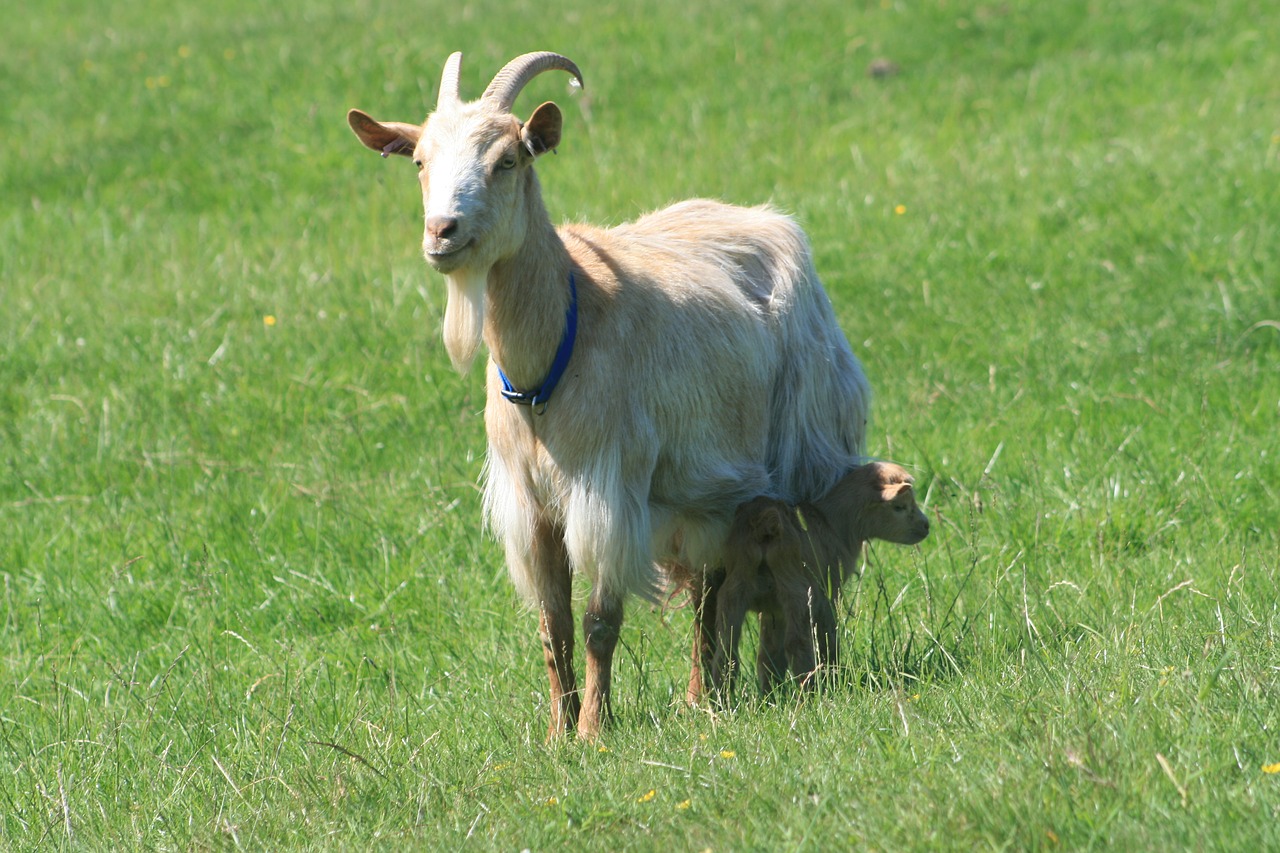
These goats are an interesting breed. You actually can’t import them into the US because of certain laws in place, but there are a few breeding herds in the country and some people import semen to use to breed hybrids.
The does produce up to six pints of milk per day. This breed is extremely docile and friendly, and the males can grow up to 155 pounds, making them one of the smaller milk breeds. They have a lovely golden coats with long hair.
7. Toggenburg
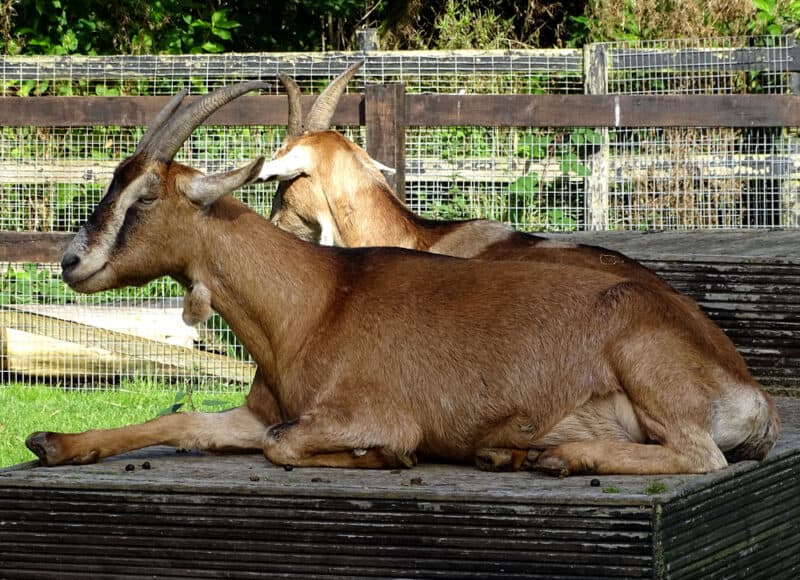
The Toggenburg breed of goat originated in Switzerland. It is smaller than most other breeds that originated in the Alps.
Toggenburgs’ size makes them great for smaller homesteads. They’re short and stocky, weighing up to 150 pounds, but carrying that weight on short, thick bodies rather than tall, lean ones. This makes them a great dual-purpose goat and helps them handle cold weather well.
Toggenburg milk has a strong flavor and a low butterfat content. If you’re a big cheese maker, this low-fat milk can offer some challenges. But the distinctive flavor of Toggenburg milk adds a lot to cheeses, making it worth the effort.
Toggenburgs do best with plenty of forage, a cooler climate, and a small herd of friends to play with.
8. Peacock
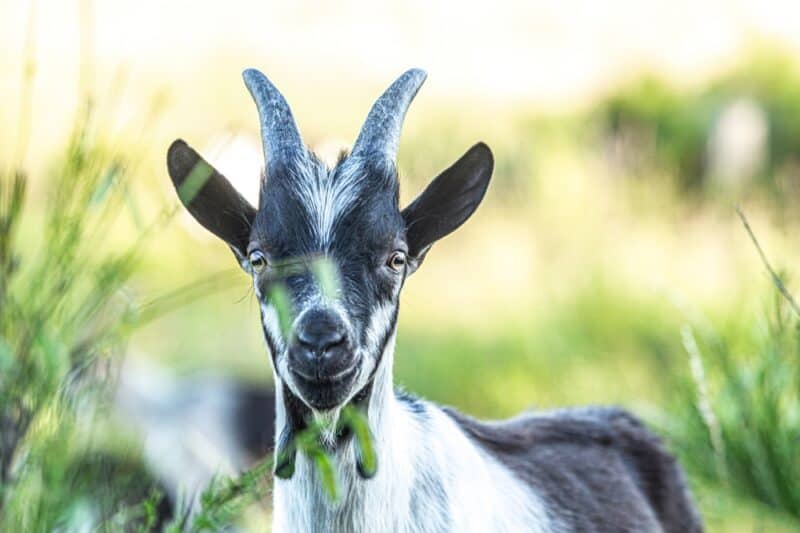
This breed is a mystery. No one really knows where they got their start, but they look a lot like other mountain breeds of goats from Switzerland. They’re hardy and can survive on forage.
They stick out from other Swiss breeds because of their color patterns. They are usually black and white only. Like other breeds from Switzerland, they produce a good amount of milk, around 2 gallons per day.
They can weigh up to 200 pounds, so they can be a good size.
9. Verata
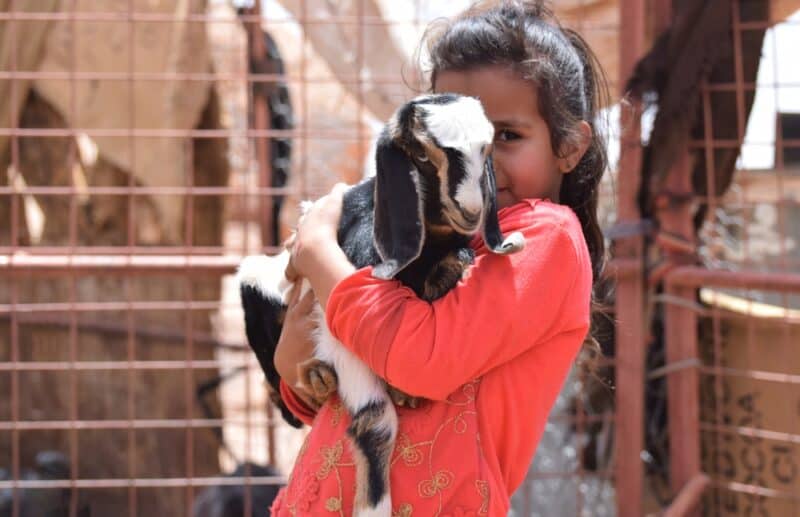
The verata is a goat you don’t see often in the US, but this Spanish breed is a fantastic dual-purpose goat for warmer climates. You’ve probably noticed that many of the goats listed here are from cold, mountainous regions. They don’t thrive in hot weather.
Veratas are a warm climate homesteader’s dream.
Veratas are easy to handle and extremely hardy. They have distinctive, twisted horns, a stocky build, and weigh in at about 150-175 pounds. Unfortunately, veratas can be hard to find in America. Though they’re still common in Spain, finding verata goats in the US may be more trouble than it’s worth.
10. Beetal
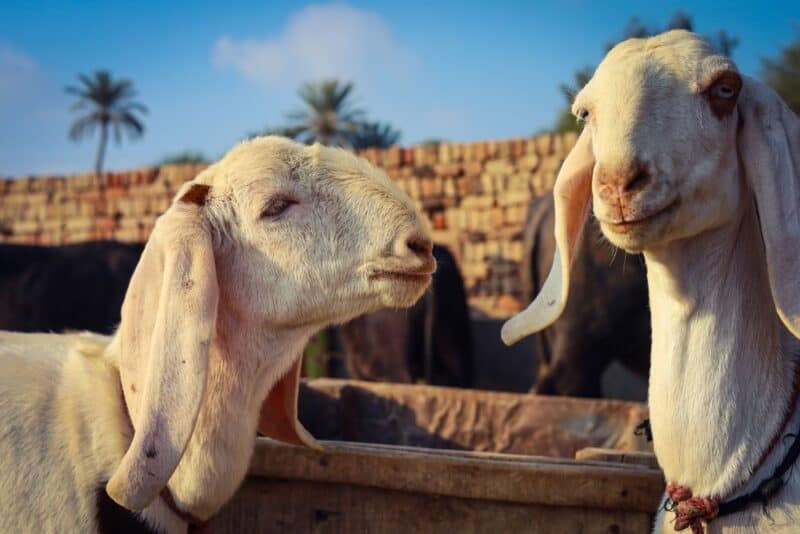
These goats are very prominent in Punjab, Pakistan. People raise them because they have so many uses. They produce a lot of quality milk and can obviously handle warmer climates.
Though they are a great milk breed, they are also raised for quality meat, too. If you can locate a breeder, then you could have a valuable dual-purpose breed on your hands.
On top of that, they are great to make leather out of as well. So if you would like to have a goat to make leather products, then this breed is for you.
11. Kamori
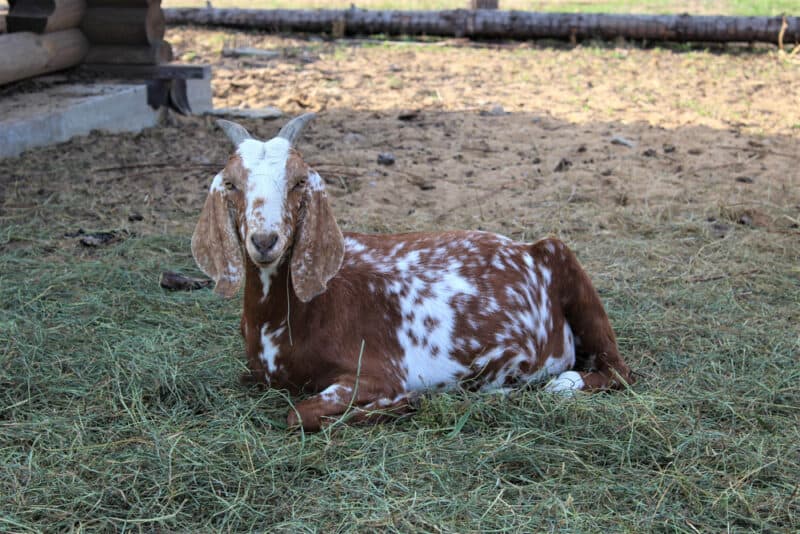
This goat is prominent in Pakistan. It’s hard to find one, and when you do, they come with a high price tag. But many people think the cost is worth it. They have long ears, stand quite tall, and are quite hardy.
If you don’t want to shell out a ton of cash, you can find kamoris that have been bred with other breeds of goat. They’re usually much cheaper.
They can grow to about 130 pounds and are known for producing a lot of milk. They can produce up to 50 ounces per day and it has a smooth, slightly goaty flavor.
12. Valais
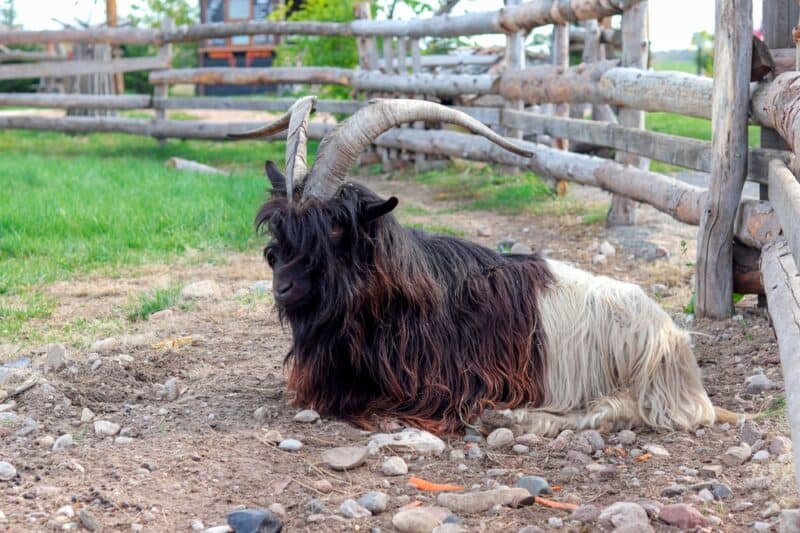
If you’re interested in preserving a gorgeous but threatened breed of goat, the Valais is for you. These stunning goats will really stand out from the crowd! They’re called “blackneck goats,” and the overall effect is a stunning half-and-half appearance. Valais have white bodies and black forelegs, necks, and heads.
Originally bred as dual-purpose meat and milk goats, Valais are now mostly used for meat and pelts. Their beautiful coats do make pretty pelts, but they still provide plenty of creamy, sweet milk.
Valais goats are small, between 100-150 pounds. If you’re interested in a goat that can provide a bit of fiber as well as meat and milk, bring a Valais to the homestead.
13. Boer
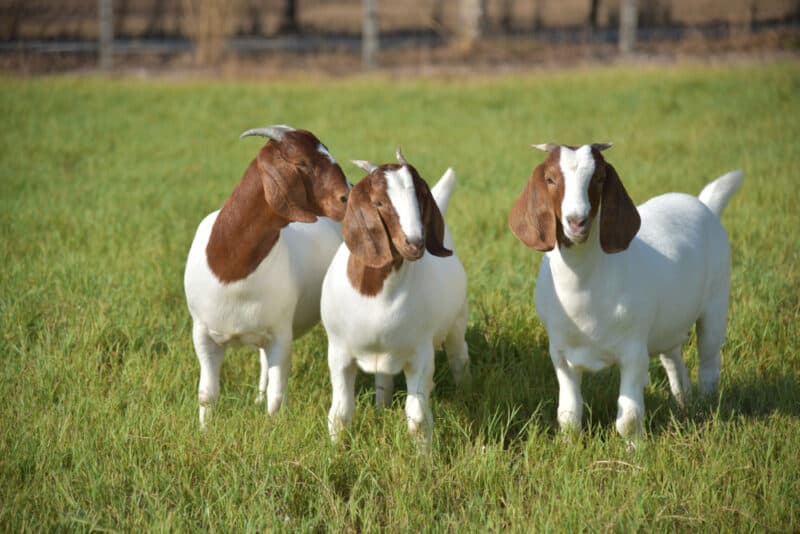
One of my goats is a Boer goat, which directly translated means “farmer goat.” She is gorgeous and so sweet. Obviously, I am very fond of this breed because of the demeanor I have experienced firsthand.
Boers are primarily meat goats. You’ll notice as soon as you see them that their bulky, meaty bodies gain weight quickly and easily. But if you don’t need a high-volume milk producer, boer goats could be a great dual-purpose breed as well.
One of my does is a boer, and she provides a regular, but small, amount of sweet, tasty milk for us each day. She’s stocky, so milking her requires a little more of a leg workout than my other does, but it’s definitely worth the effort.
Boers gain weight fast; males can weigh over 300 pounds, though does usually don’t weigh more than 225. Young boers can get to market weight (50-100 pounds) by five months of age. These goats are calm and social, so they fit in well with a small family farm.
14. Kiko
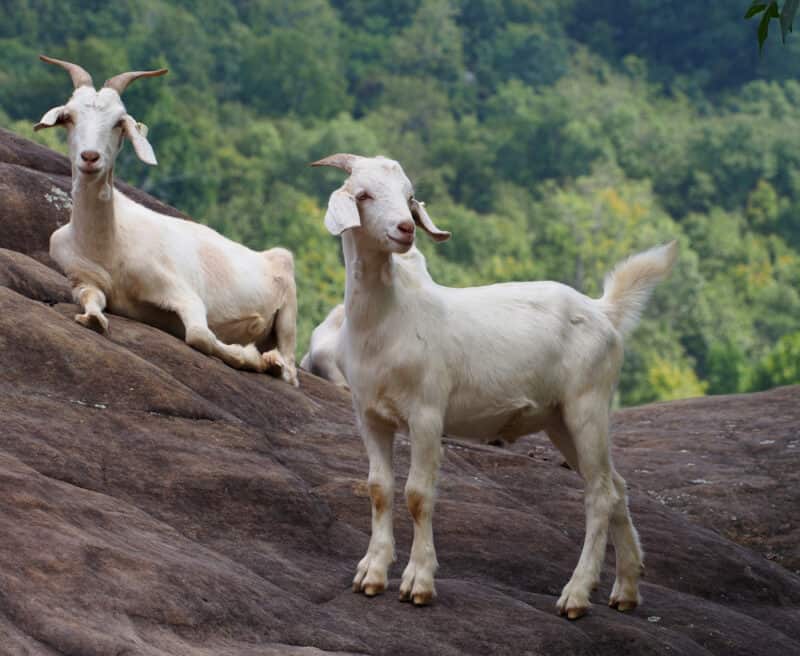
This goat has a name that literally means flesh. This meat breed was developed in New Zealand as a cross between domesticated meat goats and wild goats. Kikos are extra hardy. Their shaggy coats can protect them from the weather, and they’re able to stand their ground in face-offs with predators.
But kikos are also sweet-tempered animals that are highly trainable. Adult kikos can reach 300 pounds, but usually range between 170-240 pounds. Kikos are a great choice if you’re hoping to have a goat cart or need a companion animal.
Best of all, if you’re raising them for meat, kiko goats can reach market weight in under five months.
15. Fainting Goat
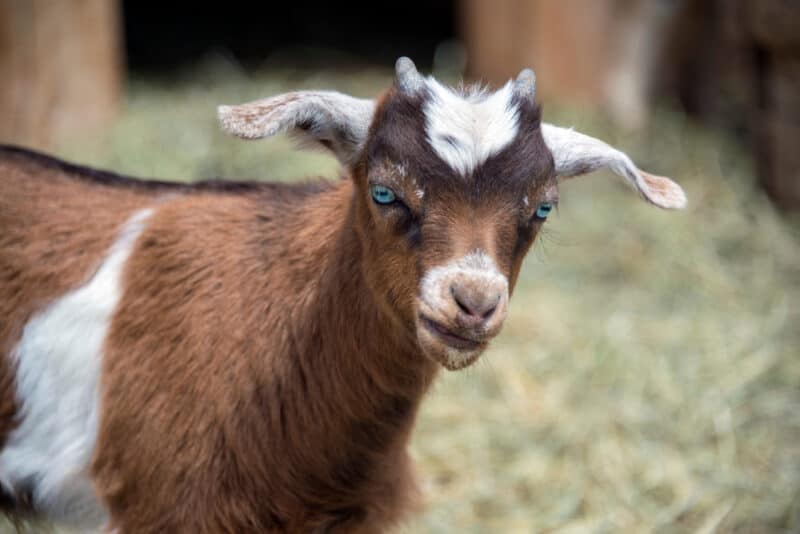
Fainting or “myotonic” goats are a fascinating addition to any homestead. These meat goats, also known as Tennessee goats, fall over when startled. It can be a bit surprising to see at first, but fainting goats can be entertaining.
The fainting isn’t harmful to the goats – they’ll faint while playing or when they’re being fed too. Myotonic goats are smaller than either kikos or boers, they usually don’t get bigger than 170 lbs. But they are stocky and gain weight well.
16. Spanish
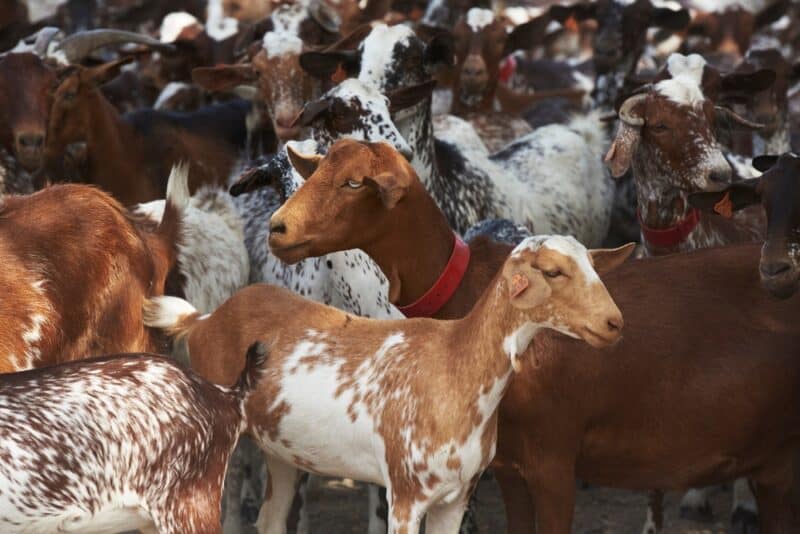
Spanish goats were once the go-to meat goat until boer goats came on the scene. Though you can still raise them for quality meat, they have a different purpose now.
Not only do these goats provide meat, but they are mainly used to clear out brush. You could have a two-for-one deal if you choose this breed. They’ve even earned the nickname brush goat because they’re so good at their job.
Spanish goats are still popular meat goats in the American South. They do extremely well in hot climates and they’re very calm.
17. British Alpine

The British alpine goat was bred in the 1800s out of Toggenburgs and they have a similar appearance. They’re quite large, weighing up to 135 pounds, and have black and white coats.
While they make a good meat breed, they stand out as milk goats. Not only do they produce a lot of milk, but they have an extended lactation period and will keep producing milk even when it’s cold.
18. Black Bengal
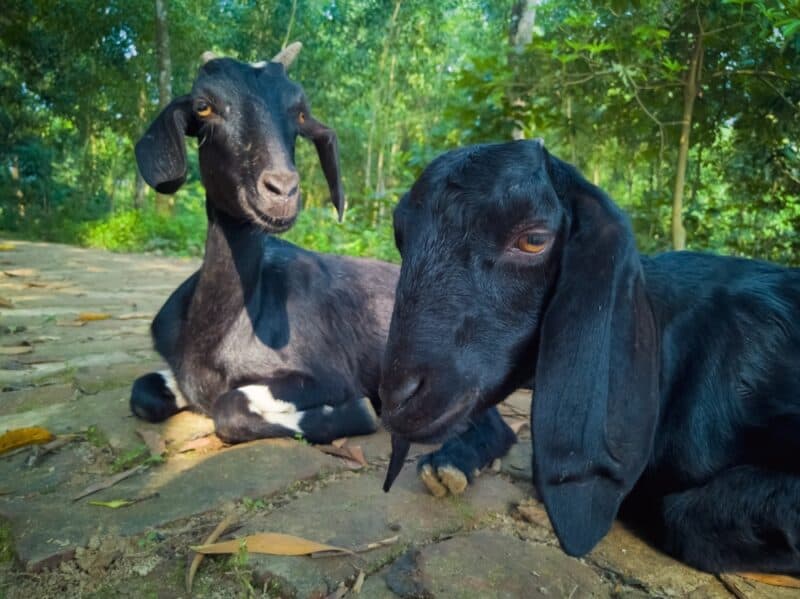
Black bengal goats are absolutely gorgeous. They are usually a solid black color with adorable floppy ears. They aren’t as common on the Western side of the world.
Black bengals, which come in a range of colors, have a high rate of reproduction and can produce four kids per year if properly managed. They make excellent meat goats, and while you can raise them for milk, they don’t produce a lot.
Bucks can weigh up to 70 pounds, but the does stay much smaller.
19. Hejazi
This is a goat breed that is usually located in Arabia. They’re a stockier breed, which makes them great as a quality meat breed.
But what makes this breed so excellent is that though they are similar to the Syrian Mountain goat, they are actually a dwarf breed which makes them easier for some people to keep. They top out at about 100 pounds and have distinctive, extremely long ears.
20. Russian White Dairy
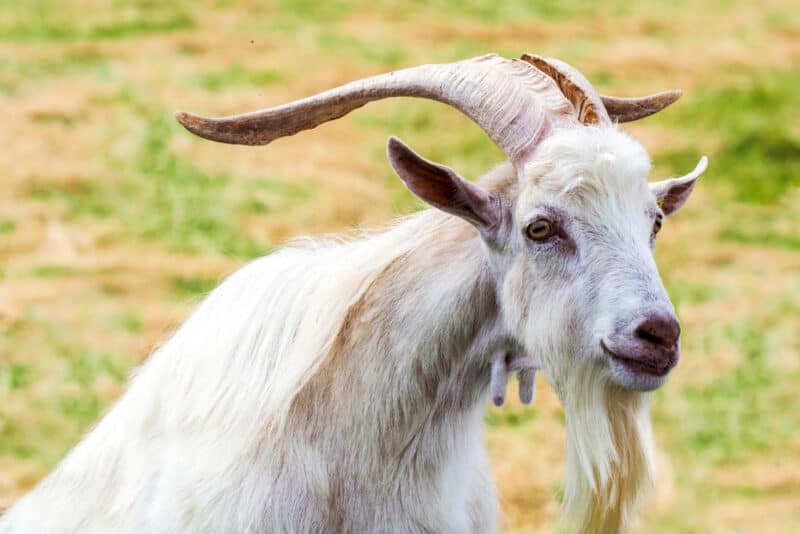
This milk breed was bred out of the Saanen and Toggenburg and it’s similar in many ways, with long, narrow necks and heads. They’re white and have short, coarse hair. Both males and females can have horns.
This breed is fairly rare, but if you get your hands on it, you’ll have a large, hardy goat breed that can grow up to 165 pounds. The females produce up to 150 gallons of rich milk per year. Their milk is high fat, at up to 5.3% fat.
21. Somali

Somali goats (also called Galla) do well in hot, arid regions. They’re primarily a meat breed and can be found in short-eared and long-eared types. They have long legs and well-muscled frames, and each can weigh anywhere from 55-120 pounds.
Does can continue producing milk even when water and food are short. Plus, they’re friendly and easy to handle.
A doe can produce up to a pint of milk per day.
22. Barbari
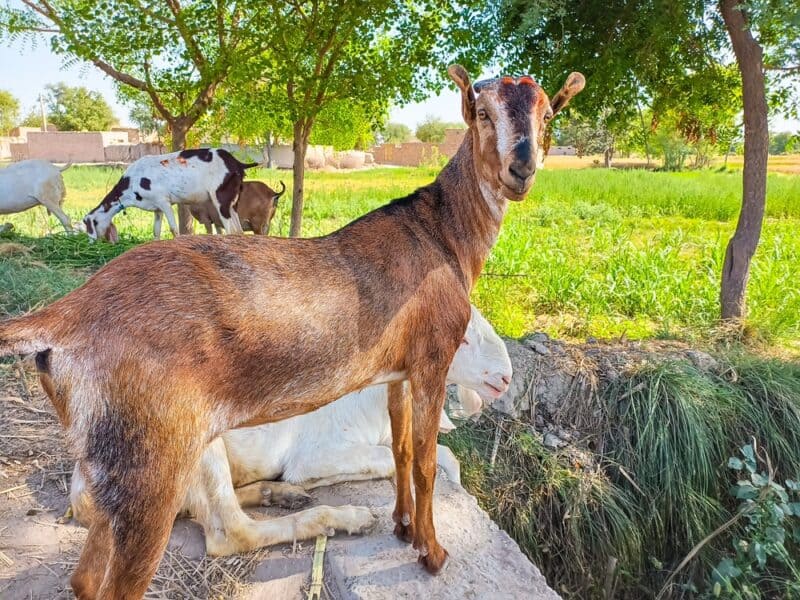
This is an interesting yet really attractive breed of goat. It is mostly found in Pakistan and India. It’s a smaller, more compact breed. The males top out at about 85 pounds, while the females are smaller.
This is a dual-purpose breed that produces a lot of milk and good-quality meat, too. They can be hard to find, but they’re worth seeking out. Expect to see about 32 ounces of milk each day and when you dress a nine-month-old goat, expect about 27 pounds.
23. Angora
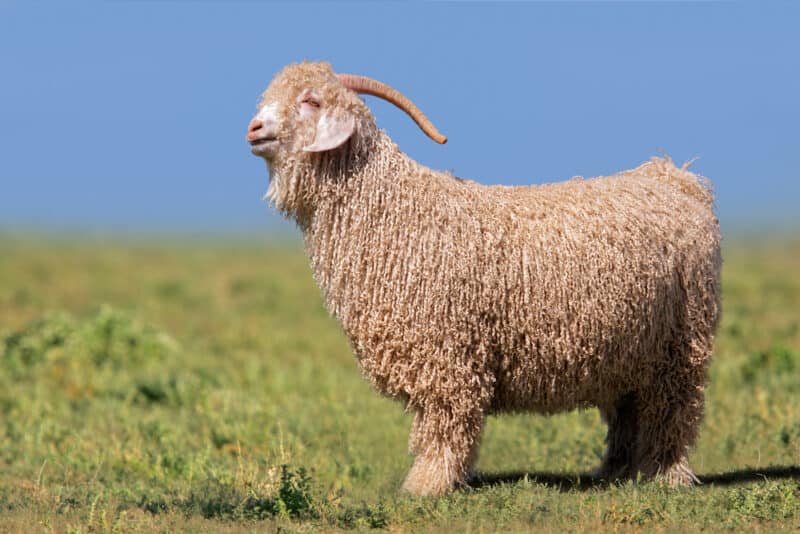
This breed of goat is absolutely adorable. It looks like a giant stuffed animal. It is actually named for where it originated which is a place in Turkey.
This fiber goat is coated in luxurious mohair. They range wildly in weight from 100-200 lbs. Angoras’ crimpy, curly locks are long and soft. They look like oversized stuffed animals – and their personality matches their looks.
Angoras are so gentle and docile that they’re more at risk from predators than many other breeds. If you raise angoras, get a good livestock guardian to keep them safe.
Angoras are not good milkers; they rarely produce enough milk to make milking worthwhile. Their meat is famous in some areas of the world, but since they don’t bulk up like meat goats, they rarely produce enough to market them consistently.
24. Pygora
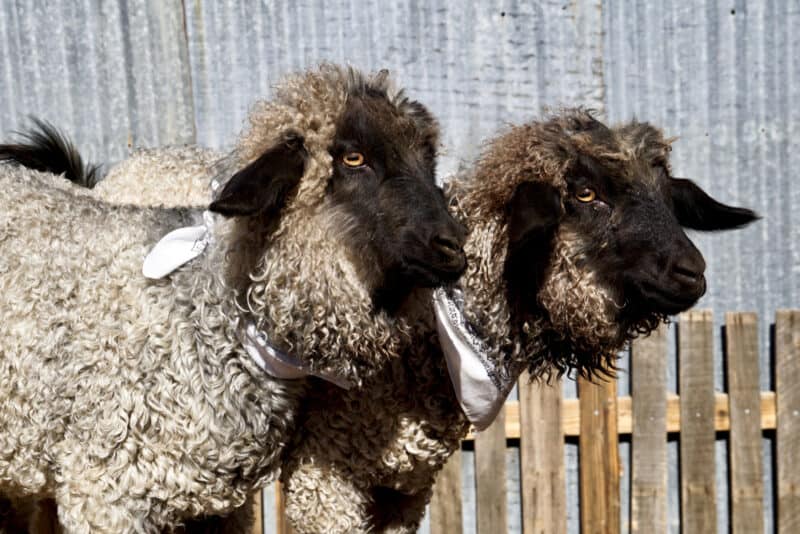
This breed of goat is another one that is too cute for words. It too looks like a life-sized version of a stuffed animal.
Tiny pygoras are a cross between Angoras and pygmy goats. These goats produce the same beautiful mohair as angoras but in a pint-size. These adorable little goats only occasionally reach 90 lbs, more often hovering in the 60-80 pound range.
If you want to raise fiber goats without much space, pygoras are perfect.
25. Cashmere
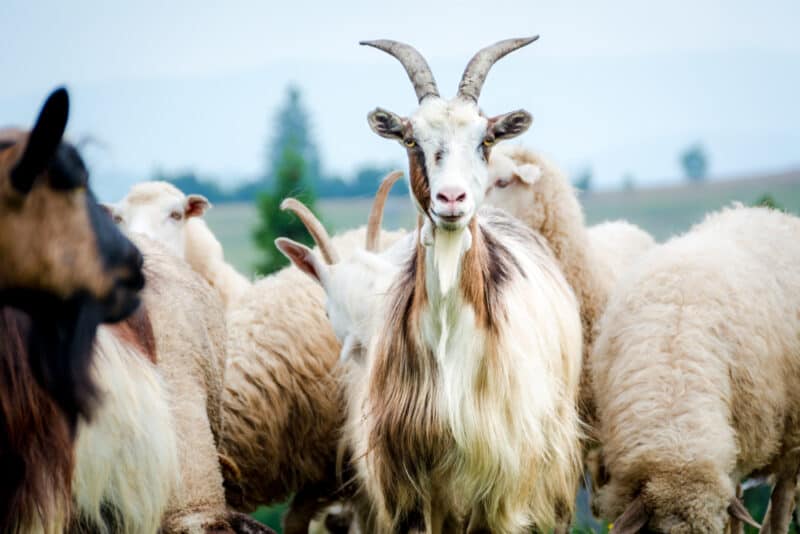
This is actually a broad spectrum for goats. Any goat that produces cashmere wool is considered a Cashmere goat.
All goats produce some cashmere – it’s the undercoat. But cashmere goats produce a huge amount of this soft, cozy fiber. There are a number of breeds that fall under the ‘Cashmere’ label, but the most common in America is the North American Cashmere.
NAC goats are a relatively new breed. They’re a dual-purpose meat and fiber goat that gains weight well, though more slowly than many meat breeds.
Cashmere goats are also known for having sweet, creamy milk – so this breed might make a great tri-purpose option if you keep your doe well-clipped during milking.
26. Nigora
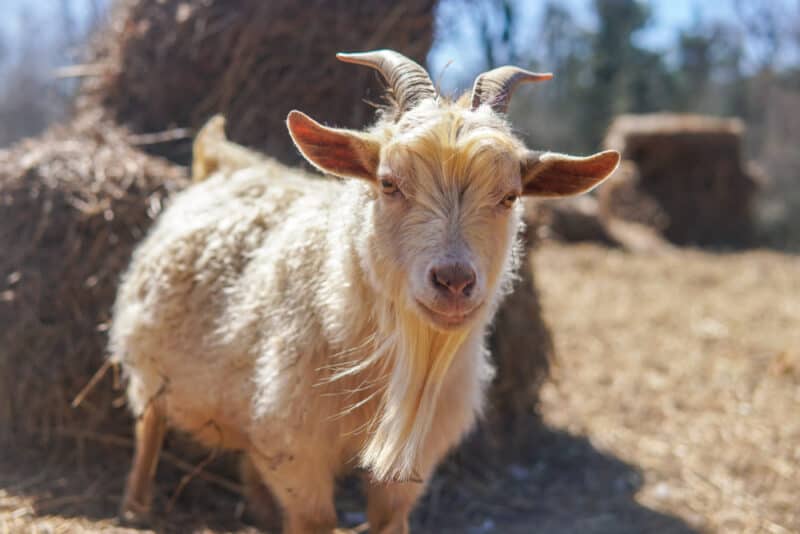
Nigora goats are extremely adorable with their small stature and fuzzy coat. That fuzzy coat makes them ideal for fiber, but they’re a pretty good dual-purpose breed, too.
It’s a crossbreed between a Mohair and a Nigerian dwarf, and produces as much milk as the larger Nigerian dwarf. The fiber is soft, silky, and high quality.
27. Nigerian Dwarf
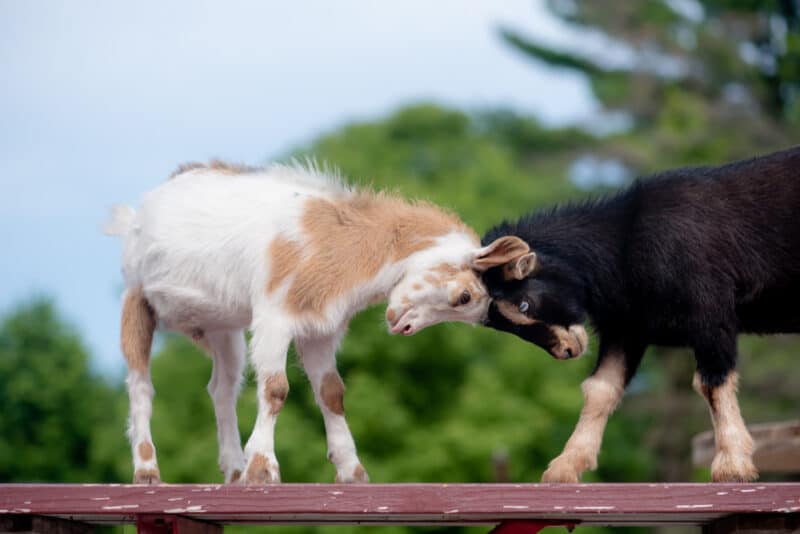
I raise Nigerian Dwarf goats myself, and I absolutely love them. They have a friendly demeanor – most of the time.
These tiny goats are well-loved by many homesteaders. They’re friendly, engaging, and small. Nigerian dwarfs average between 40 and 60 pounds, making them ideal as neighborhood pets.
Nigerian dwarf milk is the richest and creamiest goat milk available too. With 6-10% butterfat, nothing beats this milk for flavor.
If you like small goats or don’t have much space to spare, Nigerian dwarf goats can thrive in small lots and give back up to 2 quarts of milk each day.
28. Pygmy
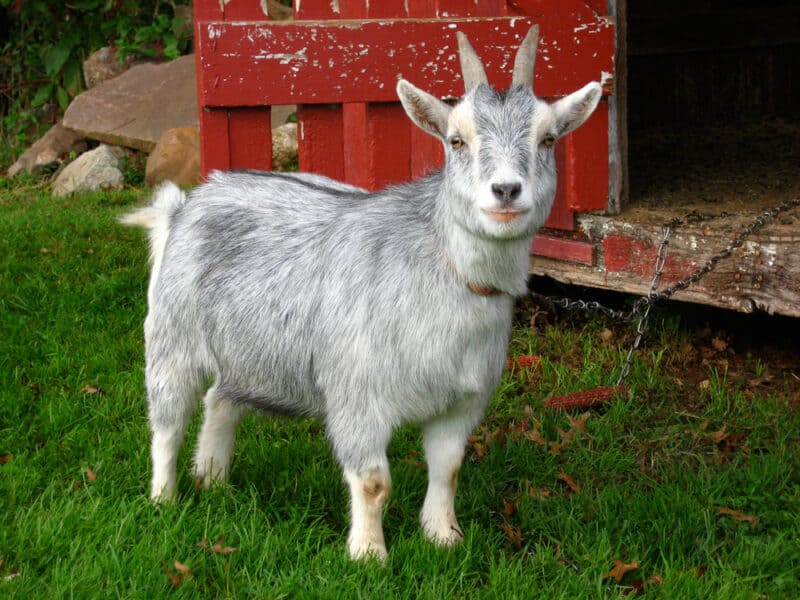
Pygmy goats are another miniature breed. I raise those too. They are technically considered a meat breed of goat because of their stocky build, but they make wonderful pets, too. They are compact and don’t require as much space as full-sized goats.
Plus, just look at their adorable faces!
The males top out at about 85 pounds, while females are about ten pounds lighter. They stay under two feet tall, so they’re quite stocky.
On top of all that, they can produce up to two quarts of milk per day for over half of the year. The milk has a good butterfat content of 4.5%. They’re hardy and adaptable.
29. Mini-Cross
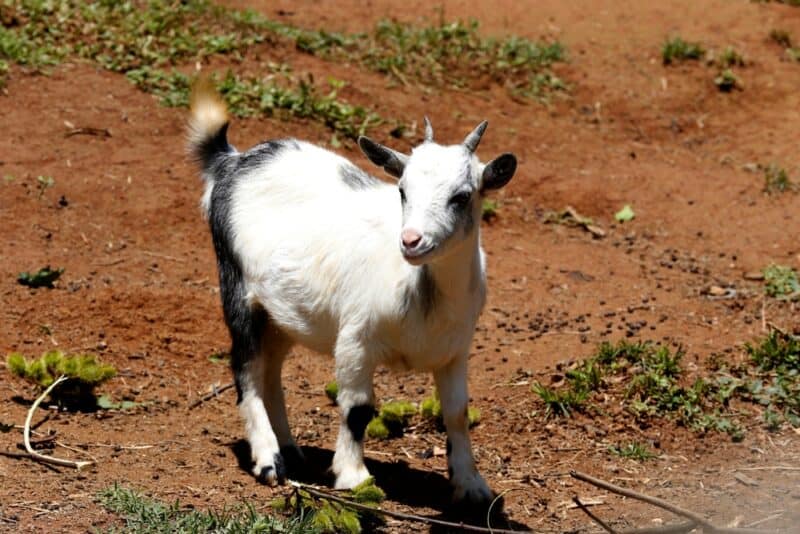
Lots of times people will take miniature breeds and cross them. This makes sweet, cute, compact goats that can be a dual purpose animal.
If you don’t have a lot of room, you might want to consider a mini-cross. Just know that these goats usually can’t be shown or registered because they’re a mix. It’s also difficult to generalize about what size they’ll end up being since they are random crosses.
They can be kept in smaller areas, can be used to produce meat and milk, and some are even good for fiber, as well.
30. Kinder
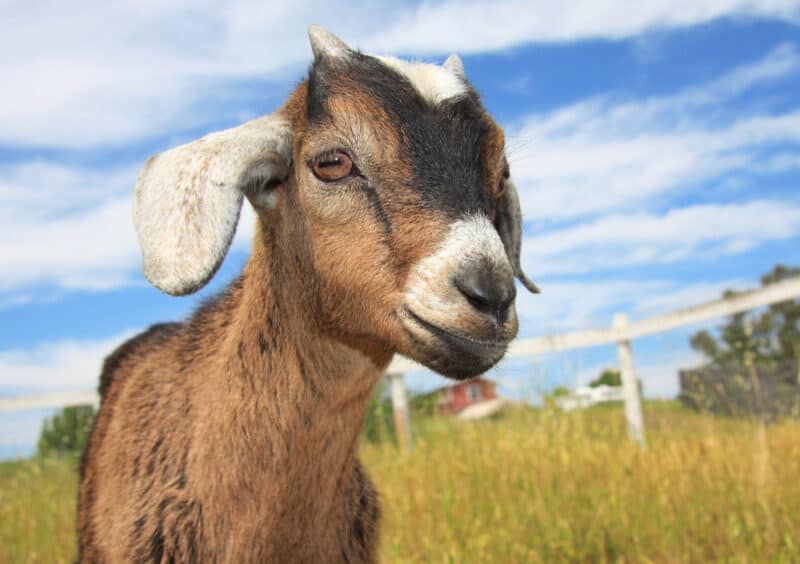
This goat is a cross between a pygmy and a Nubian. It’s a miniature dairy goat that can potentially provide meat too. It was first bred by Pat Showalter on Zederkamm Farm in Snohomish, Washington in 1985.
The milk is sweet and creamy with less of that “goaty” flavor that some other breeds have. They produce up to a gallon of milk a day, and the milk is a whopping 6% fat. They’re friendly, curious, and can breed all year round.
Females weigh up to 125 pounds and males up to 150, and they can dress out at about 60%, which is higher than average.
31. Rangeland

Rangeland goats can handle hot weather and thrive during times of drought when other breeds falter. They’re good breeders, and can produce 10 quarts of milk per day.
Each goat weighs up to 150 pounds.
They’ve become more and more popular in recent years because they’re so hardy, self-sufficient, and versatile. They’ll even force down tree bark if there’s nothing else tasty around.
They can also be used for wool production as well as milk. Their milk has a goaty flavor and about 5.5% milkfat.
